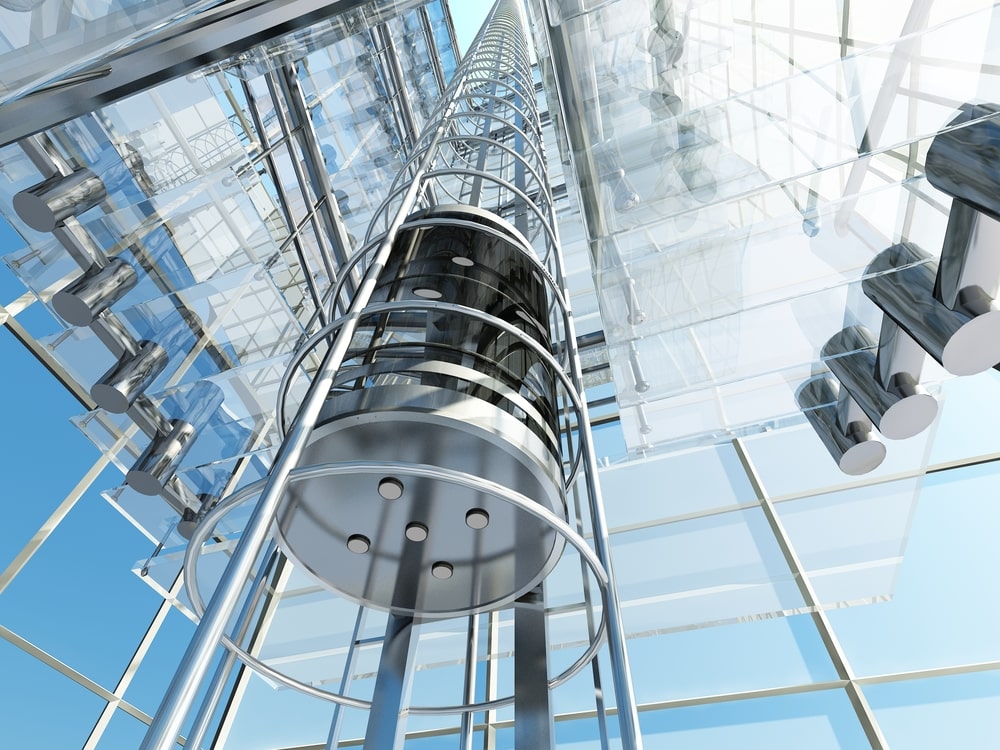Just about the time you think carbon fiber has been pushed to its limits someone comes up with a revolutionary new way to use it. Such is the case with Hyundai Elevator, a company known for building high-speed elevators for some of the tallest buildings in the world. Hyundai Elevator recently introduced the world to its newest elevator powered by a carbon fiber belt.
According to Business Korea, the new Hyundai Elevator product is the first elevator driven by a carbon fiber belt. The belt replaces the more commonly used metal rope at just one-sixth the weight. Moreover, the bell has allowed Hyundai Elevator to increase length from 600 to more than 1,000 m while still reducing electricity consumption by some 30%.
Lightweight, Efficient, and Safe
The name of the game in high-speed elevators is safety. You need to have materials that will withstand the intense forces of high-speed car travel in a confined space. As such, the belt or rope attached to the elevator car absolutely cannot fail.
Carbon fiber is an obvious choice due to its tensile strength, explains Salt Lake City’s Rock West Composites. It is exponentially stronger than steel. It also has a high vibration frequency that makes it very desirable for dealing with the air currents and terrestrial movements elevator designers have to worry about.
Simply put, a carbon fiber elevator belt is as safe as a steel rope. But it is more efficient and lightweight too, making it a better choice for high-speed elevators.
Unique Design Needs
It goes without saying that high-speed elevators have unique design needs. As such, producing a viable carbon fiber belt was no simple task. Engineers had to consider quite a few parameters in order to design something that would actually work.
For example, friction and abrasion resistance are always concerns with high-speed elevators. Friction is created when a steel rope or belt moves quickly across a pulley system. And when you are talking belts specifically, pulley systems can be rather abrasive.
In order to protect the carbon fiber from excessive friction and abrasion, it was coated with a polymer material designed to increase its coefficient. The result is a belt that moves more efficiently with more than adequate strength and thermal stability. The coated carbon fiber belt lasts twice as long as a non-coated belt.
A More Comfortable Ride
Aside from the actual mechanics and safety of elevator travel, Hyundai Elevator designers realized another benefit from the carbon fiber belt: a more comfortable ride. Though it may not seem like such a big deal, rider comfort is very important in the high-speed elevator arena. An uncomfortable ride can be enough to dissuade passengers from taking the elevator.
The polymer coated carbon fiber belt moves through the pulley system with less friction and vibration. This results in a smoother ride with less direct car vibration. Passengers do not feel movement as much, thus the high speeds are not as intimidating as they otherwise would be.
A Non-Rigid Material
Perhaps your knowledge of carbon fiber is limited to things like airplane fuselage panels and hyper car bodies. You know carbon fiber as a strong and rigid material. Obviously, such a rigid material would not work as an elevator belt.
The thing to understand is that carbon fibers are exceptionally strong even when they are not reinforcing a plastic material. Moreover, carbon fibers do not have to reinforce a rigid substrate to be useful. A woven carbon fiber fabric has plenty of uses as a flexible material. We now know one of those uses is high-speed elevator belts.

